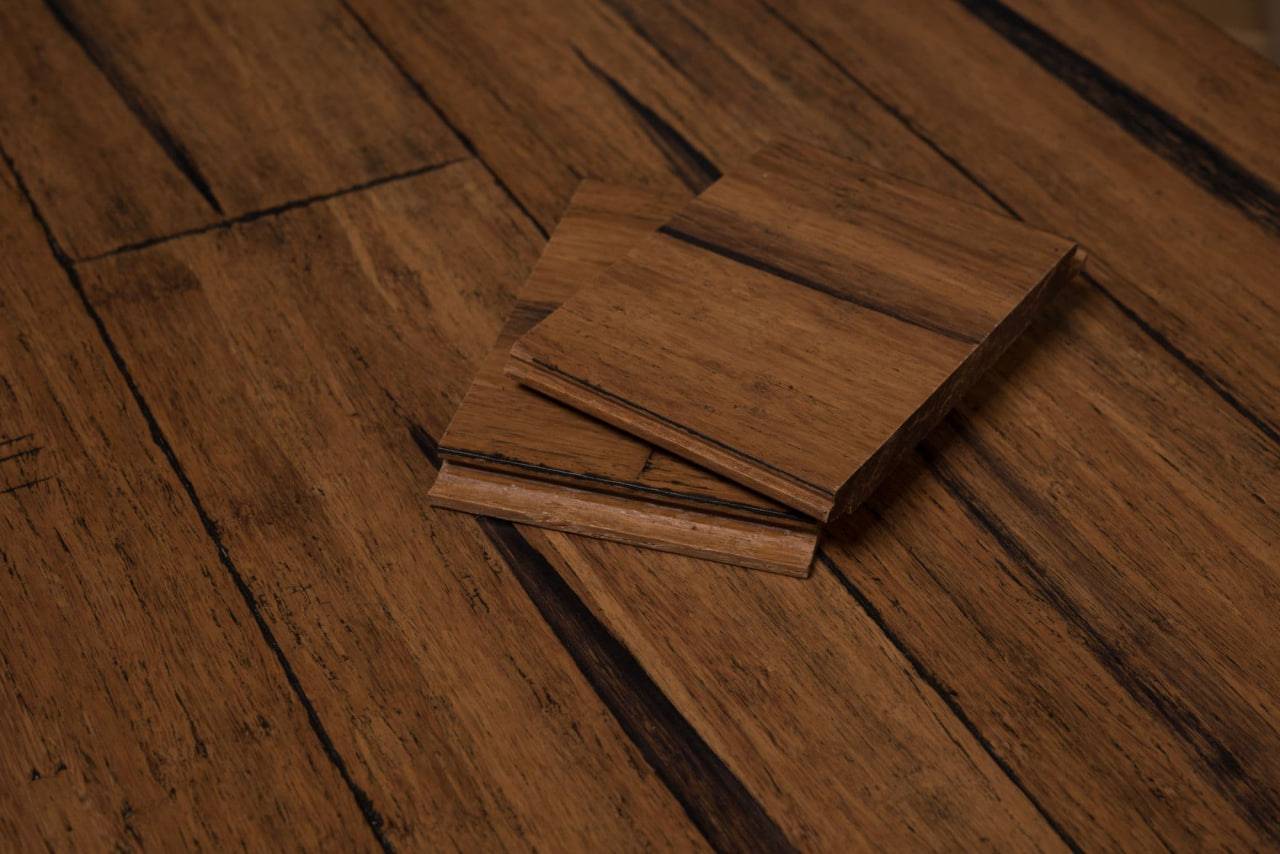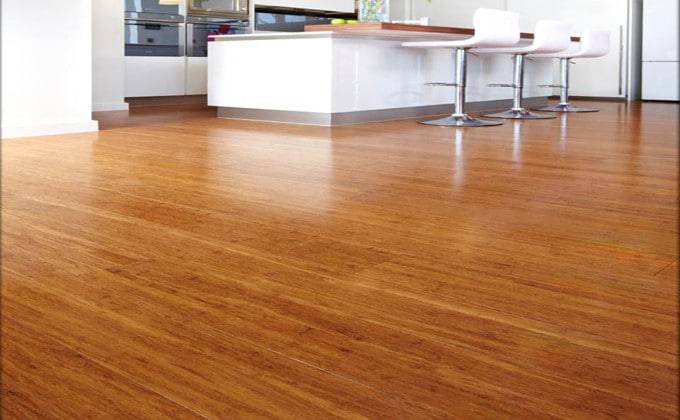Imagine transforming your home with a flooring material that is both stunningly beautiful and remarkably sustainable. Imagine a floor that feels warm and inviting underfoot, yet boasts exceptional durability to withstand the daily hustle and bustle of life. Imagine achieving this, not with exotic hardwoods or expensive tiles, but with a revolutionary material that is kind to the planet and easy on your wallet: strand woven bamboo flooring.
This guide delves into the captivating world of strand woven bamboo flooring, unveiling its secrets and empowering you to make informed decisions. Whether you’re a design enthusiast seeking unique aesthetics, an environmentally conscious homeowner, or simply looking for long-lasting, low-maintenance flooring, this journey will unveil the potential of this remarkable material to elevate your home’s style and comfort.
Get ready to step into luxury, naturally, with strand woven bamboo flooring. As we explore its sustainability credentials, impressive durability, and diverse design possibilities, you’ll discover why this innovative material is transforming homes and capturing hearts around the world.
Are you ready to embark on this exciting journey? Let’s begin!
Strand Woven Bamboo Flooring: Pros and Cons
Strand woven bamboo flooring has rapidly gained traction in recent years, captivating homeowners with its unique blend of environmental responsibility, exceptional durability, and aesthetic appeal. However, any responsible decision-making process demands a balanced approach, weighing both the advantages and potential limitations of a material. This guide delves into the pros and cons of strand woven bamboo flooring, empowering you to make an informed choice aligned with your needs and priorities.
Sustainable Strength:
- Environmental Champion: Bamboo boasts rapid growth and natural replenishment, requiring minimal water and posing significantly lower environmental impact compared to traditional hardwoods. Choosing bamboo over such alternatives can demonstrably reduce your carbon footprint.
- Responsible Sourcing: Look for certifications like FSC (Forest Stewardship Council) to ensure your bamboo flooring originates from ethically managed forests, promoting responsible practices and safeguarding ecosystems.
- Durability Dynamo: Strand woven bamboo’s exceptional hardness, even exceeding oak, translates to superior resistance against scratches, dents, and everyday wear and tear. This resilience makes it ideal for busy households with pets and active families.
- Dimensional Stability: Unlike solid wood, strand woven bamboo exhibits remarkable dimensional stability. This means it effectively resists warping and cupping even under fluctuating temperatures and humidity levels, eliminating concerns about buckling or gapping.
- Low-Maintenance Marvel: Regular cleaning with a damp mop suffices to maintain the beauty of your bamboo floor. This eliminates the need for harsh chemicals or laborious maintenance routines often associated with traditional wood flooring.
Considerations for Informed Choice:
- Cost Comparison: While more affordable than certain hardwoods, strand woven bamboo generally falls within the mid-range price category for flooring options. It may be pricier than vinyl or laminate, so careful budget planning is crucial.
- Moisture Management: Although possessing improved water resistance compared to solid wood, bamboo is not entirely waterproof. Prolonged exposure to moisture can lead to warping or damage. Promptly address spills and avoid areas prone to excessive moisture like bathrooms or basements.
- Availability Variations: Depending on your location, finding a diverse range of strand woven bamboo options might require researching specialized retailers or online vendors. Local availability may be limited compared to more common flooring materials.
- Scratch Potential: While generally resistant to scratches, bamboo can still exhibit them, especially when exposed to sharp objects or dragged furniture. Implementing protective pads and maintaining proper cleaning routines can help mitigate this issue.
- Limited Refinishing: Unlike solid hardwood, strand woven bamboo planks are typically too thin to undergo multiple sanding and refinishing procedures. Consider this factor if long-term refinishing potential is a significant priority for you.
Verdict: Balancing Priorities:
Strand woven bamboo flooring offers a compelling value proposition for homeowners seeking sustainability, durability, and natural beauty. However, understanding its potential drawbacks regarding cost, moisture sensitivity, and limited refinishing options is essential for making an informed decision. Carefully weigh your priorities and lifestyle to determine if the pros outweigh the cons in your specific case. Remember, responsible and informed decision-making empowers you to create a beautiful and sustainable home environment.
What Size Are The Strand Woven Flooring Planks?
The size of strand woven bamboo flooring planks varies depending on the style and manufacturer you choose. However, here’s a general overview:
Thickness:
- Most commonly in 10mm and 14mm thicknesses.
- Some manufacturers offer variations like 8mm or 18mm, but they’re less common.
Width:
- Typically ranges from 90mm to 190mm, with 125mm being a popular choice.
- Wider planks like 190mm create a more spacious feel, while narrower ones suit smaller rooms.
Length:
- Usually between 1800mm and 2200mm, making them suitable for most room sizes.
Factors influencing size:
- Style: Engineered planks tend to be thicker than solid planks. Parquet blocks are smaller than standard planks.
- Manufacturer: Each brand may offer unique size options.
- Availability: Wider planks might be less readily available in some regions.
It’s crucial to check the specific size offered by the manufacturer you’re interested in before making a purchase. Ensure the size aligns with your design preferences and the dimensions of your space.
Here are some additional resources to help you find the perfect size plank:
- Bamboo Flooring Company: [https://www.bambooflooringcompany.com/all-flooring/construction-type/strand-woven-flooring/]
Where Can Strand Woven BAMBOO Flooring Be Used?
Strand woven bamboo flooring offers a beautiful and versatile option for many areas of your home, thanks to its durability, easy maintenance, and warm aesthetic appeal. Here are some of the most common areas where you can incorporate this eco-friendly flooring:
Living Rooms:
Strand woven bamboo flooring adds a touch of natural elegance to your living room, creating a warm and inviting atmosphere. Its durability makes it perfect for handling foot traffic and occasional spills.
Bedrooms:
The comfortable warmth of strand woven bamboo flooring makes it ideal for bedrooms, contributing to a tranquil and relaxing ambiance. Its easy cleaning also makes it suitable for allergy sufferers.
Dining Rooms:
The subtle beauty of strand woven bamboo complements the dining room setting, creating a stylish and sophisticated space. Its resistance to scratches and spills makes it suitable for handling dining mishaps.
Kitchens:
While strand woven bamboo isn’t entirely waterproof, it offers good moisture resistance compared to other wood flooring options. With proper care and prompt cleaning of spills, it can be a beautiful and functional choice for kitchens.
Home Offices:
The natural warmth and subtle texture of strand woven bamboo flooring add a touch of serenity to your home office, promoting focus and productivity. Its easy maintenance also helps keep your workspace clean and organized.
Hallways and Entryways:
The durability and scratch resistance of strand woven bamboo make it an excellent choice for high-traffic areas like hallways and entryways. Its unique character welcomes guests and sets the tone for your home.
Basements:
Although basements can be prone to moisture, strand woven bamboo’s dimensional stability and moderate moisture resistance make it a viable option for finished basements with proper ventilation and moisture control.
Remember:
While strand woven bamboo flooring is versatile, it’s always best to check with the manufacturer’s recommendations for specific areas like bathrooms or laundry rooms, where excess moisture exposure might be a concern.
With its natural beauty, eco-friendly appeal, and practical advantages, strand woven bamboo flooring can enhance various areas of your home, creating a comfortable, stylish, and sustainable living environment.
Strand Woven Bamboo: Beauty Beyond Your Living Room
Strand woven bamboo flooring isn’t just eco-friendly, it’s surprisingly flexible! From cozy bedrooms to stylish kitchens, it elevates different areas of your home:
- Warm & Welcoming: Living rooms, bedrooms, and home offices benefit from its natural warmth and easy cleaning.
- Stylish & Durable: Dining rooms and hallways enjoy its scratch-resistant beauty, perfect for everyday life.
- Adaptable Option: With proper care, kitchens and even basements can benefit from its subtle elegance and good moisture resistance.
Remember to check individual manufacturer recommendations for specific areas.
Essentially, strand woven bamboo offers sustainable style that fits your entire home, creating a comfortable, eco-conscious haven.
Frequently Asked Questions
-
Is strand woven bamboo flooring durable?
Yes! Strand woven bamboo is exceptionally hard and resistant to scratches, dents, and wear, making it perfect for busy households with pets and active families. Its dimensional stability also prevents warping and cupping even with fluctuating temperatures and humidity.
-
Is it eco-friendly?
Absolutely! Compared to traditional hardwoods, strand woven bamboo boasts rapid growth, requires minimal water, and replenishes naturally. Choosing bamboo over alternatives reduces your carbon footprint and promotes responsible forest management practices.
-
Can it be used in kitchens and bathrooms?
While strand woven bamboo offers improved moisture resistance compared to solid wood, it’s not entirely waterproof. While suitable for kitchens with proper care and prompt spill cleaning, avoid areas with excessive moisture like direct exposure to showers or bathtubs.
-
How easy is it to maintain?
Regular cleaning with a damp mop and occasional sweeping suffice to keep your bamboo floor looking its best. No harsh chemicals or laborious maintenance routines are required, making it a low-maintenance flooring option.
-
What about cost compared to other materials?
Strand woven bamboo typically falls within the mid-range price category for flooring options. It’s more affordable than some hardwoods but pricier than vinyl or laminate. Weigh your budget and prioritize sustainability features when making your decision.
-
What sizes are available?
Plank sizes vary depending on the manufacturer and style. However, common thicknesses range from 10mm to 14mm, with widths between 90mm and 190mm and lengths between 1800mm and 2200mm. Always check specific size offerings before purchasing.
-
Where can I buy strand woven bamboo flooring?
Many local flooring retailers and online vendors offer strand woven bamboo flooring. Consider researching specialized bamboo flooring companies for potentially wider selections and expert advice.
-
Is it easy to install?
Many strand woven bamboo flooring options come with click-lock installation systems, making them suitable for DIY enthusiasts. However, for complex layouts or larger projects, consider hiring a professional installer for optimal results.
-
Can it be refinished like hardwood?
Unlike solid hardwood, strand woven bamboo planks are typically too thin for multiple sanding and refinishing procedures. Consider this factor if long-term refinishing potential is a significant priority for you.
-
What are some potential drawbacks?
While offering numerous advantages, strand woven bamboo might have some limitations depending on your needs. Compared to some hardwoods, it might be pricier. It requires prompt moisture management, and while generally scratch-resistant, can exhibit scratches with sharp objects. Consider these factors alongside its benefits to make an informed choice.



